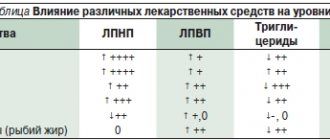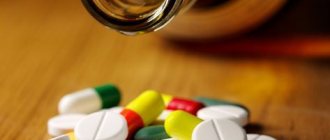Detailed description of the study
Aldosterone is a steroid hormone produced by the adrenal cortex; its synthesis is regulated by two proteins, renin and angiotensin. An important function of aldosterone is to maintain normal concentrations of sodium and potassium in the blood and control blood volume and pressure.
With a sharp increase in aldosterone concentration, renin levels drop (Conn's syndrome or primary hyperaldosteronism). Aldosterone and renin have an inverse relationship with each other. Renin is released from the kidneys when blood pressure falls, blood sodium concentration decreases, or blood potassium concentration increases. A shift in the aldosterone-renin ratio provokes a rise in blood pressure and the appearance of muscle weakness.
When sodium deficiency or decreased renal blood flow occurs, the renin-angiotensin system is activated, causing blood vessels to contract, resulting in renal hypertension. In response to this, the body releases aldosterone, so its concentration can be used to judge the causes of hypertension, the balance of electrolytes in the body and the concentration of angiotensin in the blood.
Pathogenetic approaches to diuretic therapy of ascites
(Continued. See beginning in No. 6)
Evaluation of the effectiveness of diuretic therapy in patients with liver cirrhosis with ascites
Indicators of treatment effectiveness in patients with ascites are:
- dynamics of daily diuresis (should be measured daily at the same time);
- dynamics of body weight (should be measured daily at the same time);
- dynamics of abdominal circumference (should be measured daily at the same time);
- urine electrolytes (should be measured twice a week);
- blood electrolyte levels (should be measured twice a week).
Experts from the World Organization of Gastroenterology (OMGE) recommend that the tactics of diuretic therapy in patients with liver cirrhosis with ascites be based on an assessment of serum Na and creatinine levels [16].
In cases where:
- serum sodium 126–135 mmol/l, serum creatinine is normal, it is recommended to continue treatment with diuretics under the control of electrolytes, fluid intake may not be limited;
- serum sodium 121–125 mmol/l, serum creatinine normal, international opinion - continue diuretic therapy; The authors' opinion is to discontinue diuretics or continue treatment with more careful monitoring of the patient;
- serum sodium 121–125 mmol/L, serum creatinine increased (> 150 mmol/L, or > 120 mmol/L and rising), diuretics should be discontinued and fluids replaced;
- serum sodium ≤ 120 mmol/l, diuretics should be discontinued. Management of such patients is complex; most require fluid volume replacement with colloids (Hemacel, Gelofusin, Voluven) or saline, while avoiding increases in serum sodium > 12 mmol/L in 24 hours.
In addition to the above indicators, during long-term diuretic therapy it is necessary to monitor the levels of potassium, magnesium, calcium, sugar, urea, uric acid, lipid profile, as well as the acid-base balance of the blood, taking into account all possible side effects of diuretics.
Dehydration therapy for ascites has active and maintenance phases.
In the active phase, in the absence of swelling of the legs, the excess of urine excreted over the ingested liquid should be about 1 liter per day, with a daily decrease in weight to 0.5–1 kg.
In the presence of swelling of the legs, positive diuresis can be 2–3 liters per day. In this case, there are no restrictions on daily weight loss. Once edema subsides but ascites remains, to prevent azotemia (due to decreased intravascular volume), the rate of weight loss should not exceed 0.5 kg per day, since excessive diuresis is accompanied by depletion of intravascular volume, which leads to renal failure, hepatic encephalopathy and hyponatremia .
In the maintenance phase, diuresis should be balanced and body weight stable with regular (daily) administration of diuretics.
An attempt at “impact” diuresis - once every few days - is erroneous. No rapid dehydration can be justified and only leads to hyperactivation of neurohormones and fluid retention in the body.
It should be noted that the volume of reduction of ascites in a patient with liver cirrhosis is limited by the level of reabsorption of ascitic fluid, which is 700–900 ml per day. Therefore, with polyuria up to 3 liters per day, a significant amount of non-ascitic extracellular fluid is lost, which leads to a decrease in edema and filling of the venous bed. It is safe as long as the patient has swelling. If stimulation of diuresis continues after the disappearance of edema and fluid loss exceeds the reabsorption limit of ascites, this leads to a decrease in the volume of circulating plasma. At the same time, renal blood flow decreases, which contributes to the development of functional renal failure and the development of hepatorenal syndrome (HRS), the mortality rate of which reaches 75%.
Refractoriness to diuretic therapy in patients with liver cirrhosis with ascites. Patients with liver cirrhosis may develop early (so-called inhibition of the effect) and late refractoriness. Early refractoriness appears in the first hours or days after the start of active prescription of diuretics, depends on the hyperactivation of neurohormones and is stronger, the more active the dehydration (unrecommended copious diuresis).
Early refractoriness is overcome by adequate (not excessive) diuresis with the obligatory combined use of ACE inhibitors and/or spironolactone.
Late refractoriness occurs after weeks and months of constant diuretic therapy and is associated with hypertrophy of the apical cells of the renal tubules, where diuretics act.
The development of late refractoriness requires periodic (every 3–4 weeks) change of active diuretics and their combination with ACE inhibitors.
In this case it is advisable:
- use of diuretics only against the background of ACE inhibitors and spironolactone;
- using a combination diuretic therapy option or intravenously administering twice as much (than the previous ineffective dose) dose of a diuretic, possibly background administration of furosemide twice a day or continuous intravenous drip administration;
- a combination of diuretics with drugs that improve renal filtration, inotropic function of the myocardium, increasing oncotic pressure of the blood (Eufillin, albumin, Neoton, cardiac glycosides, potassium, magnesium, dopamine).
In patients with liver cirrhosis with ascites who are receiving diuretic therapy for a long time, side effects may be observed (more often in females - due to hyperestogenemia), with initial electrolyte imbalances, severe PKN and reduced blood pressure.
The main side effects of combined treatment with diuretics in patients with liver cirrhosis with ascites. The most common complications of diuretic therapy are:
- encephalopathy, which develops with forced diuresis and is caused by hypokalemic, hypochloremic alkalosis;
- hypokalemia is the result of the action of diuretics and secondary aldosteronism. Blood potassium levels below 3.1 mmol/l require discontinuation of the diuretic and administration of potassium chloride;
- hyponatremia - caused by the excretion of sodium in the urine as a result of increased diuresis in patients on a strict salt-free diet. In end-stage disease, hyponatremia can mean sodium builds up inside cells. In this case, you need to stop diuretics. Adding sodium to treatment in these cases, when its actual level in the body, like water, is increased, is a mistake and only leads to an increase in body weight and the development of pulmonary edema;
- increased risk of bleeding from varicose veins - with an inappropriately rapid decrease in ascites, the risk of portal crises increases, which can result in bleeding. The most important thing in this case is careful correction of PG;
- azotemia - reflects impaired renal blood flow and a decrease in the volume of extracellular fluid. In combination with severe electrolyte disturbances, it indicates an unfavorable prognosis and the possibility of developing HRS.
When potassium and creatinine increase:
- Aldosterone antagonists are discontinued.
- It is not advisable to use thiazide diuretics (Hypothiazide), which interfere with sodium reabsorption in the cortical segment of the ascending loop of Henle and in the initial part of the distal tubules. They increase diuresis and natriuresis by 30–50%, are effective at a glomerular filtration level of at least 30–50 ml/min, therefore, in cases of severe renal failure, their use is useless.
- The drugs of choice are “loop” diuretics (torasemide, furosemide, ethacrynic acid, bumetanide) - the most effective diuretics, blocking sodium reabsorption throughout the ascending part of the loop of Henle and maintaining effectiveness even with renal failure and filtration > 5 ml/min.
In a number of clinical situations, due to the development of side effects and deterioration of the patient’s condition, the question of discontinuing diuretic therapy arises.
Indications for discontinuation of diuretic drugs in patients with liver cirrhosis with ascites:
- encephalopathy (in the form of precoma and “flapping” tremor);
- hyponatremia (serum Na level <120 mmol/l);
- progressive uremia (serum creatinine > 2.0 mg/dL);
- hypokalemia (blood potassium level below 3.1 mmol/l);
- hyperkalemia and metabolic acidosis (when taking spironolactone);
- arterial hypotension;
- individual intolerance.
Conclusion
The appearance of ascites is an important turning point in the course of liver cirrhosis. Adequate management of ascites not only improves the quality of life of a patient with cirrhosis, but also helps prevent severe complications such as bleeding, SBP and HRS (Figure 1).
However, despite a decrease in ascites and an improvement in the quality of life of patients, long-term survival without transplantation does not increase in the majority of patients with liver cirrhosis, therefore, if it develops, the possibility of a liver transplant should be considered.
It should be noted that specialists involved in the treatment of these patients are constantly faced with successively emerging intractable problems, often leading to ineffective treatment and death. According to the authors, the most important direction in the treatment of ascites, in addition to removing excess fluid from the body, is the correction of PG. To do this, it is recommended to use means that affect its functional component and mechanisms of systemic implementation involving central hemodynamics. In this case, drugs that affect the functional component of PG are non-selective beta blockers and aldosterone antagonists as neurohumoral modulators. Drugs that reduce systemic manifestations of PG include ACE inhibitors and ARBs. Based on the pathogenetic mechanisms of ascites development in patients with liver cirrhosis, the authors attempted to develop a complex therapy regimen for this category of patients, including the period before the development of ascites (Scheme 2).
In general, all described sections are relevant for the effective treatment of ascites in patients with liver cirrhosis. This includes adherence to a strict regimen, diet, regular assessment of diuresis and laboratory parameters, knowledge of modern approaches to diuretic therapy, and the correct use of new drugs. It is important and necessary to simultaneously take into account and daily painstaking assessment of a whole list of clinical parameters, the state of the cardiovascular system, kidneys, etc. in order to make an individual therapeutic decision for a particular patient.
Thus, the treatment of ascites is a very delicate “jewelry” work in which every little detail is significant; requires the doctor to have additional knowledge, experience and the ability to holistically evaluate a multi-level coordinate system called “liver cirrhosis”.
For questions regarding literature, please contact the editor.
S. N. Mehdiev , Doctor of Medical Sciences, Professor Yu. A. Kravchuk , Candidate of Medical Sciences I. V. Subbotina O. A. Mehtieva * M. V. Shapovalov VMA named after. S. M. Kirova, * St. Petersburg State Medical Academy named after. I. I. Mechnikova , St. Petersburg
Scheme 1
Algorithm for prescribing diuretics to patients with liver cirrhosis, depending on the presence and severity of ascites
Absence of ascites - aldosterone antagonists as a neurohumoral modulator (spironolactone 25-50 mg/day*), courses of 3-6 months with a break of 1-3 months.
Initial (transient) ascites - aldosterone antagonists (spironolactone up to 200 mg/day), after the ascites resolves, switch to a maintenance “neuromodulatory” (25–50 mg/day) dose.
Moderate (non-strained) - aldosterone antagonists (spironolactone up to 200 mg/day) + loops (furosemide at a dose of 40–160 mg/day/torasemide 5–100 mg/day).
Severe ascites - the same as for moderate ascites: spironolactone (100–400 mg/day) + furosemide (40–160 mg/day)/torasemide (5–100 mg/day), if the maximum doses of the drugs used are ineffective within 5 –7 days, ascites is considered resistant.
Resistant ascites (this concept includes the ineffectiveness of combination therapy with spironolactone and furosemide, so it is initially recommended to replace furosemide with torasemide):
- spironolactone (100–00 mg/day) + torsemide (5–100 mg/day) or
- spironolactone (100–400 mg/day) + Uregit (25–50 mg/day);
while remaining ineffective:
- spironolactone (100–400 mg/day) + furosemide (40–160 mg/day) + torsemide (5–100 mg/day) or
- spironolactone (100–400 mg/day) + torasemide (5–100 mg/day) + Uregit (25–50 mg/day).
Maintenance therapy (for all types of ascites, except initial):
- spironolactone (50–100 mg/day) + thiazides (Hypothiazide 25–50 mg/day, up to 14 days with a 3–7-day break) + carbonic anhydrase inhibitors (acetazolamide 0.25 × 3 times/day, 3–4 days , once every 2 weeks);
if ineffective, it is possible to supplement therapy with furosemide (40–160 mg/day) or torasemide (5–100 mg/day) or Uregit (25–50 mg/day) 1–2 times a week.
* For side effects/contraindications to aldosterone antagonists and as an additional diuretic, the following are used:
- thiazides (Hypothiazide 25–75 mg/day, up to 14 days with a 3–7-day break) + carbonic anhydrase inhibitors (Diacarb 0.25 × 3 times/day, 3–4 days, once every 2 weeks);
- Na-channel blockers (amiloride 10–15 mg/day, duration of administration is similar to spironolactone).
Scheme 2
A variant of the working scheme for complex therapy of ascites in patients with liver cirrhosis, depending on its presence and severity:
Absence of ascites (duration of therapy is constant):
- Anaprilin 40–80 mg/day/carvedilol 25–50 mg/day *;
- aldosterone antagonists as a neurohumoral modulator (spironolactone 25–50 mg/day*), continuously or for a course of 3–6 months with a break of 1–3 months.
Initial ascites (duration of therapy - constant):
- Anaprilin 40–80 mg/day/carvedilol 25–50 mg/day and/or lisinopril 2.5–20 mg/day/spirapril 6 mg/day *;
- spironolactone up to 200 mg/day, until ascites resolves and transfer to a maintenance dose (25–50 mg/day).
Moderate (non-strain) ascites (duration of therapy - until ascites resolves, then transfer to maintenance therapy):
- lisinopril 2.5–20 mg/day/spirapril 6 mg/day and/or Anaprilin 40–80 mg/day/carvedilol 25–50 mg/day *;
- spironolactone (up to 200 mg/day) + furosemide (40–160 mg/day)/torasemide (5–100 mg/day).
Severe ascites (duration of therapy - individually, usually up to 4 weeks, then transfer to maintenance therapy):
Basic therapy
- lisinopril 2.5–20 mg/day/spirapril 6 mg/day * and/or eprosartan 300–600 mg/day* and/or Anaprilin 40–80 mg/day;
- spironolactone (100–400 mg/day) + furosemide (40–160 mg/day)/torasemide (5–100 mg/day).
If the maximum doses of the drugs used are ineffective within 3–7 days, ascites is considered resistant. To prevent the development of resistant ascites, additional therapy is recommended.
Auxiliary therapy (drugs that improve renal filtration, myocardial inotropic function, increase blood oncotic pressure):
- Eufillin ** with SBP more than 100 mm Hg. Art. (5-10 ml of 2.4% solution intravenously, No. 5-10, immediately after the drip - furosemide), with lower blood pressure - dopamine (2-5 mcg/min);
- albumin (10–20% 100–200 ml, preferably salt-free) and fresh frozen plasma (200–400 ml, even in the absence of hypoproteinemia), courses of 5–10 injections of each, possibly alternating every other day, diuretics are best administered immediately after protein preparations;
- a combination with positive inotropic agents for hypotension is desirable, but effective without it: with Neoton (1.0 IV drip, No. 10, best administered before albumin or plasma) and/or cardiac glycosides (digoxin IV drip 0.025% 0 .5–1.0), dopamine or dobutamine (2–5 mcg/min, preferably in the form of continuous drip or infusion), in extreme cases with glucocorticoids** (60–200 mg prednisolone IV drip, only for a period critical hypotension, are more effective in alcoholic etiology of the disease).
Resistant ascites:
Basic therapy
- eprosartan 300–600 mg/day* and/or lisinopril 2.5–20 mg/day/spirapril 6 mg/day and/or Anaprilin 40–80 mg/day/carvedilol 25–50 mg/day*;
- one of the options for combined diuretic therapy (it is possible to administer intravenously twice the dose of diuretic (than the previous ineffective dose), it is possible to administer background furosemide twice a day or continuously intravenously by drip):
– spironolactone (100–400 mg/day) + torasemide (5–100 mg/day) or – spironolactone (100–400 mg/day) + Uregit (25–50 mg/day) if ineffective: – spironolactone (100– 400 mg/day) + furosemide (40–160 mg/day) + Uregit (25–50 mg/day) or – spironolactone (100–400 mg/day) + furosemide (40–160 mg/day) + torsemide (5 –100 mg/day) or – spironolactone (100–400 mg/day) + torsemide (50–100 mg/day) + Uregit (25–50 mg/day).
Adjuvant therapy (same as therapy for tense ascites)
An important therapeutic goal at this stage is the prevention of hepatic encephalopathy (HE), bleeding, SBP, and HRS.
Maintenance therapy (for all types of ascites, except initial):
- spironolactone (up to 100 mg/day) + thiazides (Hypothiazide up to 50 mg/day, up to 14 days with a 3–7 day break) + carbonic anhydrase inhibitors (acetazolamide 0.25 × 3 times/day, 3–4 days, once in 2 weeks, preferably on days off thiazides).
If ineffective, it is possible to supplement therapy with furosemide (40–160 mg/day) or torasemide (5–10 mg/day) or Uregit (25–50 mg/day) 1–2 times a week.
* Author's point of view ** In the absence of contraindications









